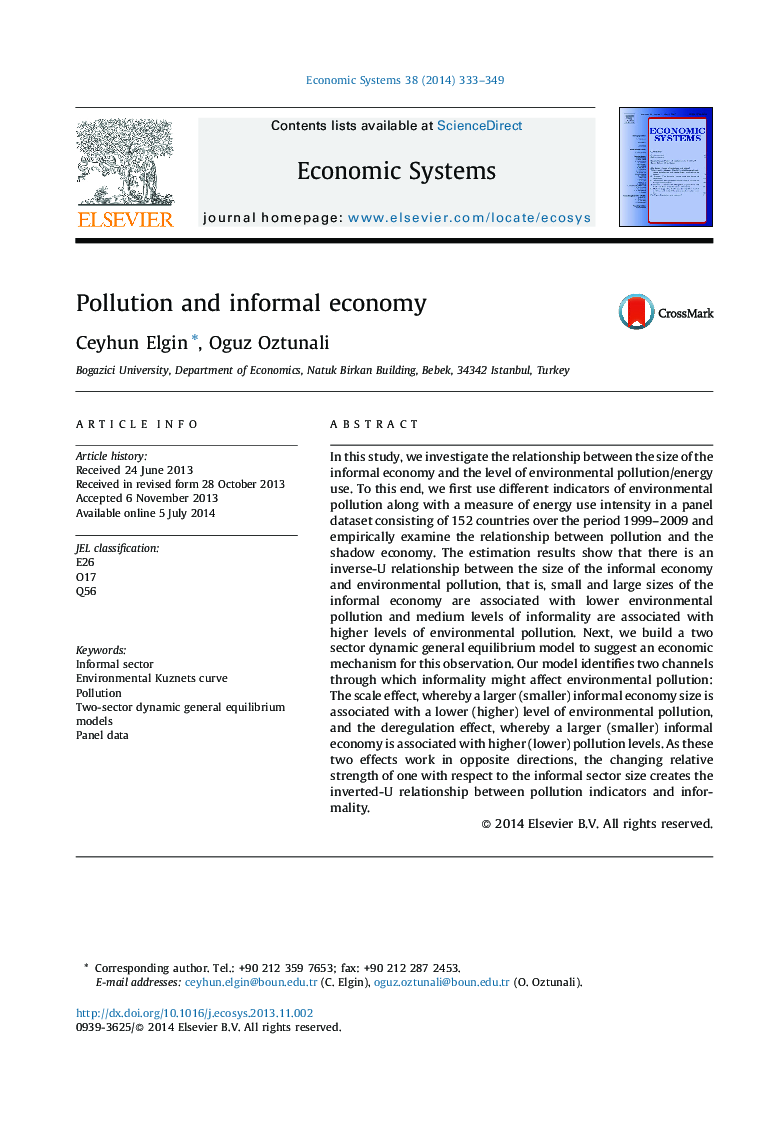| Article ID | Journal | Published Year | Pages | File Type |
|---|---|---|---|---|
| 5056542 | Economic Systems | 2014 | 17 Pages |
â¢Inverse-U relationship between pollution and informality.â¢Two-sector dynamic general equilibrium model of pollution.â¢A thorough panel-data analysis supporting the hypothesis.
In this study, we investigate the relationship between the size of the informal economy and the level of environmental pollution/energy use. To this end, we first use different indicators of environmental pollution along with a measure of energy use intensity in a panel dataset consisting of 152 countries over the period 1999-2009 and empirically examine the relationship between pollution and the shadow economy. The estimation results show that there is an inverse-U relationship between the size of the informal economy and environmental pollution, that is, small and large sizes of the informal economy are associated with lower environmental pollution and medium levels of informality are associated with higher levels of environmental pollution. Next, we build a two sector dynamic general equilibrium model to suggest an economic mechanism for this observation. Our model identifies two channels through which informality might affect environmental pollution: The scale effect, whereby a larger (smaller) informal economy size is associated with a lower (higher) level of environmental pollution, and the deregulation effect, whereby a larger (smaller) informal economy is associated with higher (lower) pollution levels. As these two effects work in opposite directions, the changing relative strength of one with respect to the informal sector size creates the inverted-U relationship between pollution indicators and informality.
